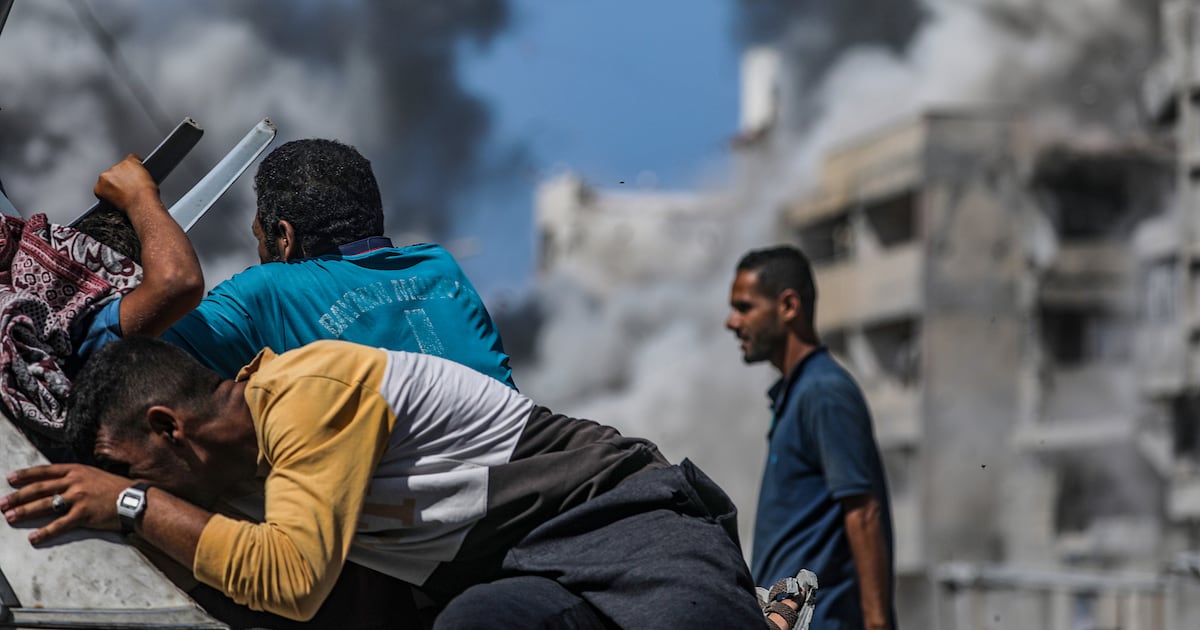World
Gaza Faces Devastation After Two Years of Conflict

The ongoing conflict in Gaza has left the region in ruins after two years of relentless bombardment by Israeli forces. Palestinian poet Fedaa Zeyad, who lived in the Shati refugee camp in Gaza City, recently joined hundreds of thousands of residents fleeing south as Israeli tanks advanced towards the city. Describing the destruction, Zeyad stated, “If I ever go back, it will not be the same city I have known. Already much of it has been erased and obliterated.”
As of early September, Gaza City, the largest urban center in the enclave, housed approximately 1 million people. The bombardment has devastated significant portions of the area, completely destroying homes and agricultural land. The situation is dire, prompting discussions of a ceasefire and a postwar plan proposed by the United States, which has garnered backing from Israel and Arab states.
The US plan calls for the disarmament of Hamas and suggests that control of Gaza would transfer to a supervisory body known as the “board of peace.” This body would oversee a Palestinian committee responsible for day-to-day governance. Although both Israel and Hamas have expressed conditional agreement to the plan, significant hurdles remain. Negotiations are slated to resume on Monday between US and Arab negotiators, Israel, and Hamas.
Even with an agreement, the reconstruction of Gaza could take years and cost billions. According to UN estimates, approximately 54 million tonnes of concrete debris need clearing, and the essential infrastructure is in shambles. The humanitarian crisis has escalated, with estimates indicating that 78 percent of buildings in the Gaza Strip have sustained damage, and over half have been completely destroyed.
The sheer scale of destruction has prompted some officials to call for a comprehensive, ground-up rebuilding effort rather than incremental improvements. Amjad Shawa, director of the Palestinian Non-Governmental Organizations Network, remarked, “Everything has been lost and very little remains. The damage this time is unlike in any previous wars in Gaza.”
Moreover, the agricultural sector has suffered catastrophic losses. The UN Food and Agriculture Organization (FAO) reported that 98.5 percent of Gaza’s cropland is either damaged or inaccessible, with only 232 hectares remaining for cultivation out of the 15,000 hectares available prior to the conflict. With many irrigation wells damaged and livestock numbers drastically reduced, the region faces an impending famine, as indicated by a UN-backed hunger monitor.
The ongoing conflict has not only claimed lives but has also led to mass displacement. Many inhabitants have sought refuge in tents across central Gaza or in the southern Mawasi coastal strip, where basic services such as running water and sanitation are largely unavailable. The World Bank previously estimated that recovery and reconstruction costs for damage incurred during the first year of conflict could reach around $53 billion (€45.1 billion). This figure will likely increase given the continued devastation.
As the conflict grinds on, sentiments among Gazans reflect a profound sense of loss and uncertainty. Despite recent discussions about ceasefires and reconstruction, there are fears of forced displacement under the guise of “voluntary emigration.” Shawa expressed concerns that the destruction is aimed at severing the connection between Palestinians and their land, stating, “This total ravaging of the land is aimed at breaking our connection with it, so they can plant the idea that there is nothing to come back to.”
The Israeli government, led by Prime Minister Binyamin Netanyahu, asserts that its military operations are necessary to combat Hamas and its associated terror infrastructure. In a recent address at the UN, Netanyahu claimed Israel is dismantling the “Hamas terror regime” throughout Gaza. Official figures estimate that over 66,000 Palestinians have been killed during the conflict, while the October 2023 attacks by Hamas on southern Israel resulted in the deaths of 1,200 people.
As Gaza’s landscape continues to change under military pressure, the future for its residents remains uncertain. Many young Palestinians, like Shahd Ghassan, a fifth-year dentistry student, express a desire to leave the enclave entirely. Ghassan lamented the disruption of her education, stating, “In a normal situation I would be graduating this year. What I very much want now is a chance to leave Gaza with my family and escape this genocide.”
The ongoing conflict and its aftermath present a complex web of challenges for the people of Gaza. Rebuilding will require not only financial resources but also a concerted effort to address the humanitarian catastrophe unfolding within the region. As the discussions continue, the hope for peace and recovery hangs in the balance.
-

 Top Stories3 months ago
Top Stories3 months agoTributes Surge for 9-Year-Old Leon Briody After Cancer Battle
-

 Entertainment4 months ago
Entertainment4 months agoAimee Osbourne Joins Family for Emotional Tribute to Ozzy
-

 Politics4 months ago
Politics4 months agoDanny Healy-Rae Considers Complaint After Altercation with Garda
-

 Top Stories4 months ago
Top Stories4 months agoIreland Enjoys Summer Heat as Hurricane Erin Approaches Atlantic
-

 World5 months ago
World5 months agoHawaii Commemorates 80 Years Since Hiroshima Bombing with Ceremony
-

 Top Stories3 months ago
Top Stories3 months agoNewcastle West Woman Patricia Foley Found Safe After Urgent Search
-

 Top Stories5 months ago
Top Stories5 months agoFianna Fáil TDs Urgently Consider Maire Geoghegan-Quinn for Presidency
-

 World5 months ago
World5 months agoCouple Convicted of Murdering Two-Year-Old Grandson in Wales
-

 World5 months ago
World5 months agoGaza Aid Distribution Tragedy: 20 Killed Amid Ongoing Violence
-

 World5 months ago
World5 months agoAristocrat Constance Marten and Partner Convicted of Infant Murder
-

 Top Stories4 months ago
Top Stories4 months agoClimbing Errigal: A Must-Do Summer Adventure in Donegal
-

 Top Stories4 months ago
Top Stories4 months agoHike Donegal’s Errigal Mountain NOW for Unforgettable Summer Views








